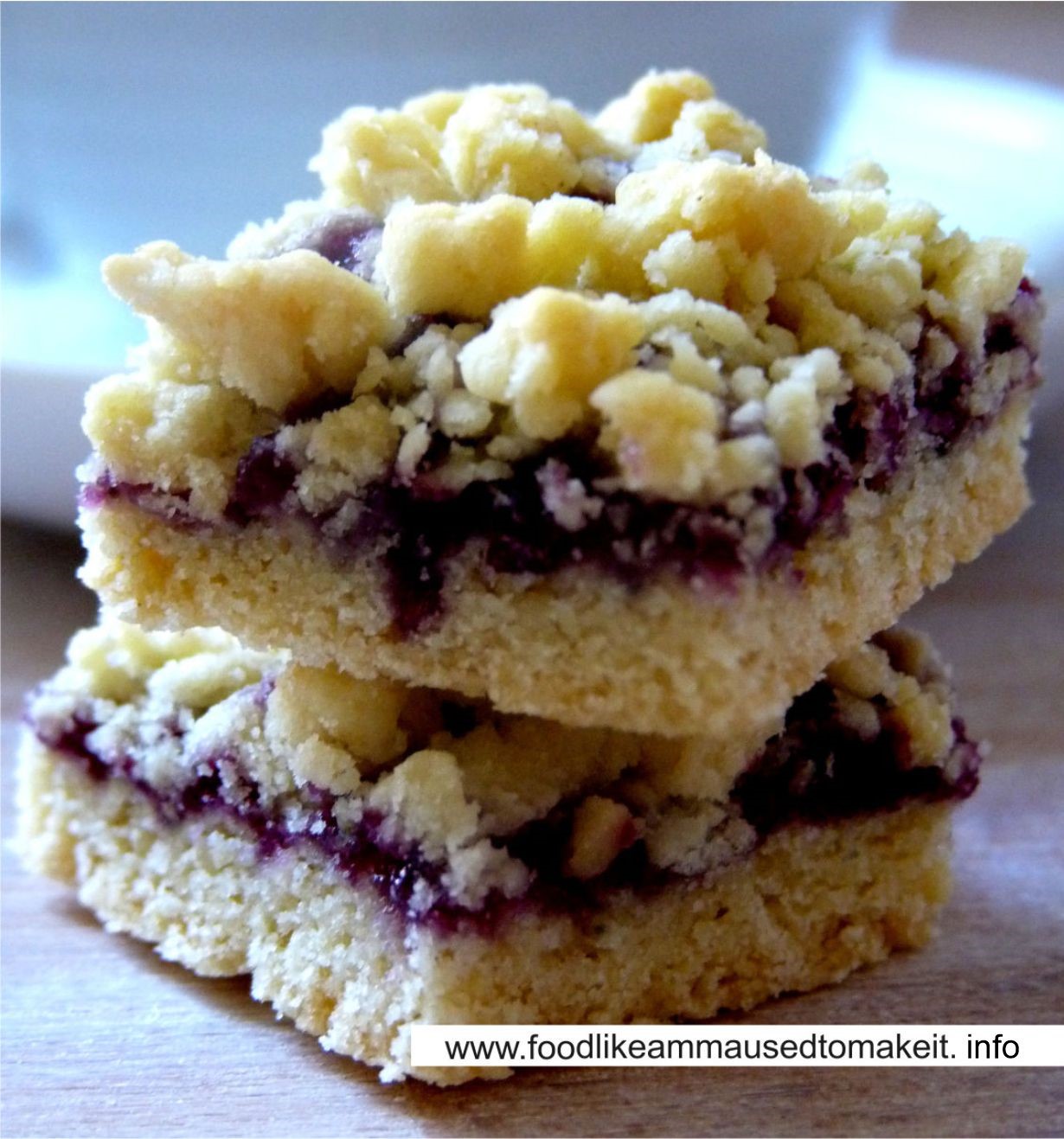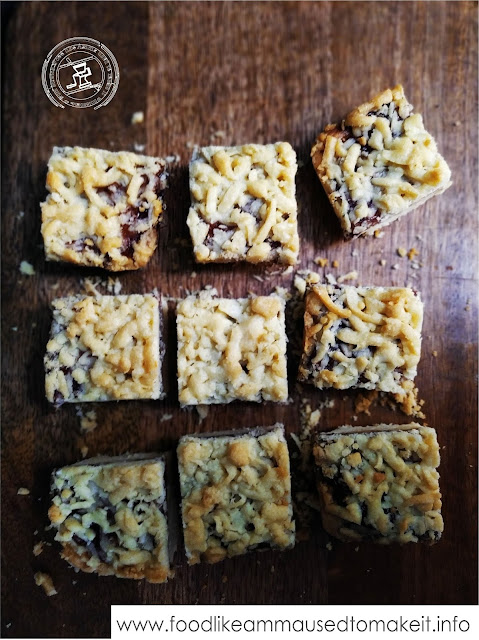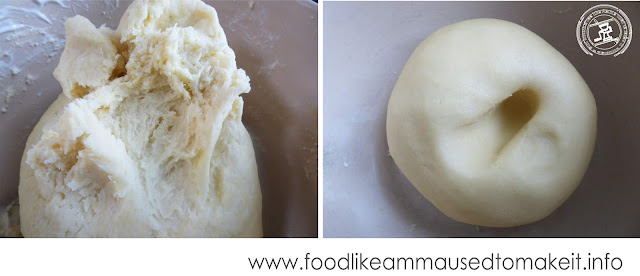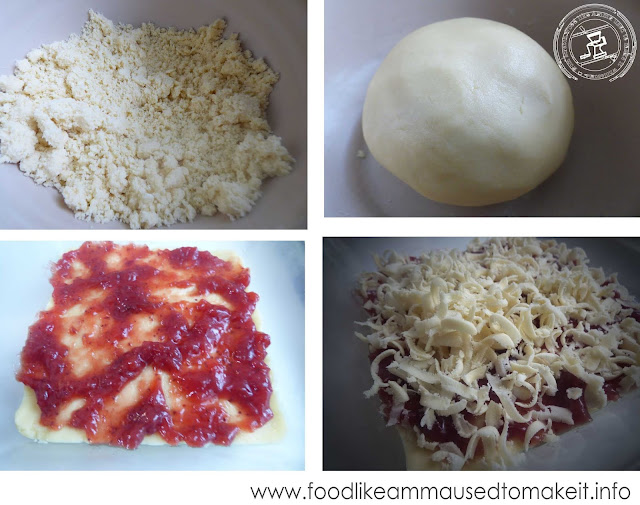This post features 2 easy Hungarian tart recipes. Amma’s classic Hungarian tart recipe and my own eggless recipe. Hungarian Tart is a soft biscuit-like treat spread with jam and then sealed with a crumbly top layer. Like most fruit tarts it reminds me of a fruit cobbler in its makeup of fruit (in this case jam) sandwiched between two layers of dough. It resembles German Streusel more than it does any other tart I’ve ever seen or tasted. Hungarian Tart has no known association with Hungarian cuisine but remains a South African favourite. Amma used to make Hungarian tarts mostly for Diwali or when we were expecting visitors. Easy to make these are a treat for any occasion. This recipe features two Hungarian Tart recipes, the classic recipe with egg and a simple substitute to make eggless Hungarian Tart.

Table of Contents
Origins of This Hungarian Tart Recipe
When I first posted this recipe way back in September 2011, I did not know of a similar recipe in existence or perhaps its original source until a reader posted a comment about it. A search for the origin of this recipe led me to Saveur magazine which posted a recipe for Hungarian Shortbread from Baking with Julia by Dorie Greenspan (Morrow, 1996). A recipe made famous by Julia Child. Over the last few years, I have had my own adaptations to Amma’s Hungarian tart. I prefer baking with butter instead of margarine and like the crumbly melt-in-mouth biscuit textured tarts to cake-like ones.
This post features 2 Scrumptious Hungarian tart recipes, Amma’s South African Hungarian Tart and an Eggless Hungarian Tart.
Hungarian Tart vs. Hungarian Shortbread
The two recipes are almost identical in ingredients except for the use of oil, not featured in the shortbread version. The shortbread version is not the same as classic shortbread using a ratio of 1 part sugar: 2 parts butter: 3 parts flour. Instead, it also uses egg yolk and baking powder for a fluffy soft cake-like texture rather than a crumby biscuit texture. I’ve wondered if the South African version of the recipe was one adapted for economical reasons, i.e. reduced butter content and the use of oil, perhaps to account for the reduced butter content. The South African Hungarian tart recipe also uses 2 whole eggs instead of just the yolks.
How to Make Hungarian Tart Step by Step
Hungarian Tart (pictured below left) has an elastic dough texture vs. the soft buttery one of Hungarian shortbread (on the right).
South African Hungarian Tart
Hungarian Tart (Krummel Tert) has a thick base and is covered with a crumb layer. The thickness of the base varies according to personal preference. For a thick base use a deep pan or tart pan and for a thinner tart base use a flat sheet. I prefer a thin tart base not more than 2cm high, mostly because a thicker base results in a drier taste and texture.
Similar to pink snowballs its texture lies somewhere between a cake and biscuit. Still, it results in a firm dough suitable enough to grate over the jam forming the top layer of the Hungarian Tart. Amma mostly made Hungarian Tarts with mixed fruit Jam, the result was red Hungarian tarts. You may also use the jam flavour of your choice. I have used a blackberry jam which accounts for the deep violet colour. I also prefer butter instead of margarine.
Amma’s Hungarian tart recipe was sourced from one of the local Newspapers. A similar recipe does appear in Indian Delights but I am not sure of the original source of this recipe. The recipe uses both oil and margarine, eggs and baking powder which result in a soft biscuit-like texture for the base.
Scrumptious South African Hungarian Tart Recipe
Eggless Hungarian Tart Recipe
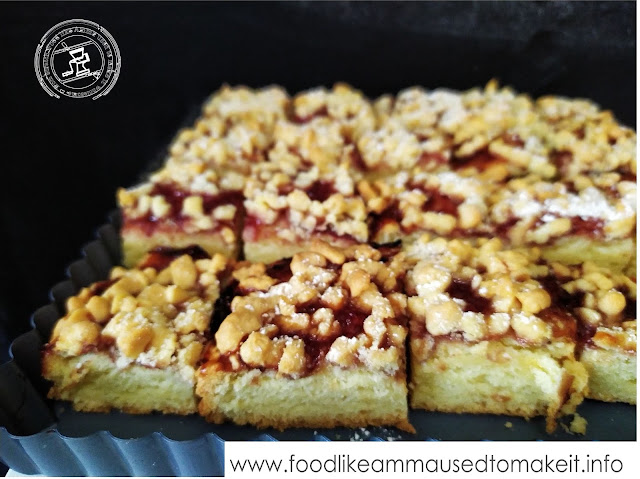
My most commonly used substitutes for eggs in baking are the following ingredients:
Instead of 1 egg, you can use:
¼ cup yoghurt or
¼ cup cooking oil or
1 ripe banana or
1 cup apple sauce. In this recipe, I used 175ml yoghurt.
